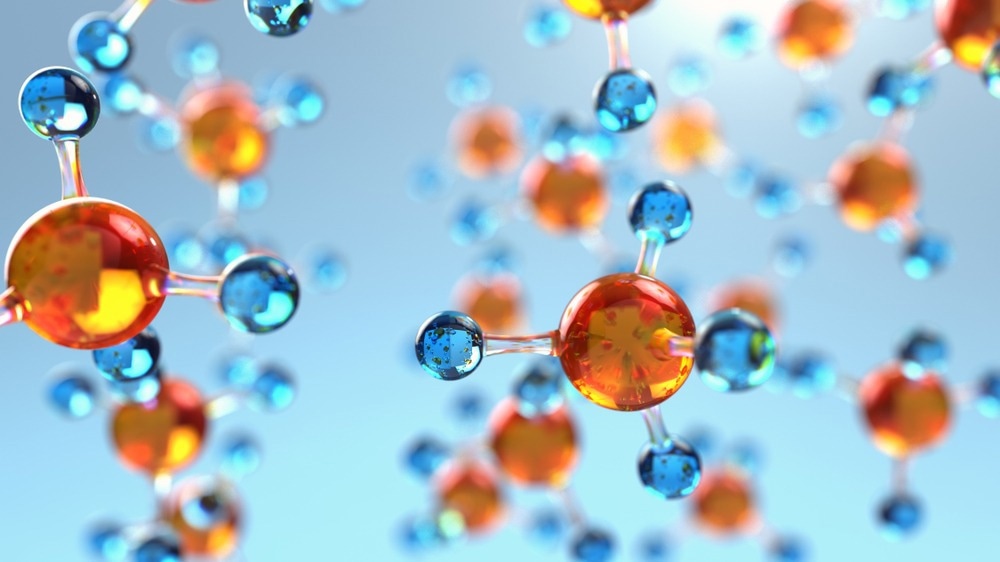Gold-palladium (Au-Pd) nanoparticles are used in various industrial applications as nanocatalysts. However, the adsorption of different gases can cause small changes to the composition of nanocatalysts, affecting their chemical characteristics. Developing a novel method for analyzing these structural changes in Au-Pd nanoparticles is critical for improving their catalytic performance.

Study: Atomic-Scale STEM Analysis Shows Structural Changes of Au–Pd Nanoparticles in Various Gaseous Environments. Image Credit: Photobank.kiev.ua/Shutterstock.com
A recent study published in The Journal of Physical Chemistry C focuses on this issue by proposing a novel in situ scanning transmission electron microscopy (in situ STEM) analysis for studying the composition and morphology changes of Au-Pd nanoparticles in different gaseous environments.
Gold-Palladium (Au-Pd) Nanoparticles
Palladium (Pd) is an effective catalyst for a wide variety of processes, including carbon monoxide (CO) oxidation, nitrogen oxide (NO) reduction, and alkyne-alkene hydrogenation. Although palladium is an expensive metallic element with very low selectivity, its chemical characteristics and selectiveness can be modified by combining it with other metal complexes.
The functionalization of palladium (Pd) with gold (Au) is one such favorable composite. Palladium is frequently diluted with gold to improve palladium utilization and catalytic characteristics. For example, gold-palladium (Au-Pd) nanoparticles outperform their monometallic equivalents in the hydrogenation of butadiene.
In other circumstances, these nanoparticles have been employed in hydrogen exchange reactions, where the alloy phase produces a high level of activity.
Recent research has also concentrated on the electrocatalytic capabilities of Au-Pd nanoparticles for converting carbon dioxide (CO2) to a hydrocarbon mixture. This reactivity is caused by the surface interaction of adsorbed carbon monoxide with hydrocarbon intermediates, resulting in longer hydrocarbons.
Limitations in Structural Analysis of Au-Pd Nanoparticles
The above examples demonstrate how Au-Pd nanoparticles can be employed in catalytic reactions. Although Au-Pd nanoparticles can optimize the catalytic characteristics of palladium by properly dispersing palladium atoms on the surface, this technique has not been substantially researched.
Moreover, the catalytic efficiency of Au-Pd nanoparticles is heavily influenced by particle morphology. Composition, oxidation state, and shape are important criteria to consider when optimizing catalytic activity. The surface microstructure and facet configuration, in particular, have a significant impact on catalytic capabilities.
Pure gold nanoparticles have been studied extensively using in situ STEM techniques, revealing changes in facet directions and surface abrasion when exposed to gaseous settings at high temperatures. However, relatively few in situ STEM studies have been conducted on Au-Pd systems.
The effect of palladium incorporation in a gold crystal is not well known, particularly when various gases and temperatures are used. Additionally, the impact of palladium oxidation in Au-Pd nanoparticles is poorly characterized, even though it might be critical in the morphological alterations of these nanoparticles.
A Novel in situ STEM Analysis of Au-Pd Nanoparticles
The alteration of surface morphology, such as facet rebuilding, can affect the desorption and adsorption efficiencies of Au-Pd nanoparticles and hence their catalytic capabilities. In addition, the movement of Pd and Au atoms inside the nanoparticles can reduce catalytic efficiency and specificity under catalytic reaction settings.
To answer these questions, the researchers in this study conducted an in situ STEM investigation of standalone Au-Pd particles in diverse gaseous environments, such as oxygen, hydrogen, carbon monoxide, and carbon dioxide, at varying temperatures. It was discovered that the as-prepared Au-Pd nanoparticle sample had a core-shell architecture with a palladium-rich layer on the surface.
Experimentally observed results were coupled with density functional theory (DFT) estimates of the surface energy to understand the fundamental thermodynamic preference for structural change in pure Pd and Au-Pd nanoparticles.
Important Findings of the Research
The researchers found sharper faces on the surface of Au-Pd nanoparticles exposed to oxygen or air at 400 degrees Celsius. Smaller palladium islands were found on the surface, although some atoms were reallocated inside the bulk when the temperature increased in the presence of oxygen.
Subtle variations in surface roughness were seen when oxygen was replaced with hydrogen at 400°C, correlating with density functional theory (DFT) computations. When carbon monoxide was injected at room temperature and 200 degrees Celsius, the particles lost their surface cleanliness. The adsorption of carbon monoxide molecules on a particle's surface altered the surface and lowered the predominance of facets in Au-Pd nanoparticles.
These in situ STEM findings demonstrate how various gases may produce minute surface alterations in Au-Pd nanocatalysts, significantly impacting their catalytic performance.
Reference
Foucher, A. C. et al. (2022). Atomic-Scale STEM Analysis Shows Structural Changes of Au–Pd Nanoparticles in Various Gaseous Environments. The Journal of Physical Chemistry C. Available at: https://pubs.acs.org/doi/10.1021/acs.jpcc.2c05929
Disclaimer: The views expressed here are those of the author expressed in their private capacity and do not necessarily represent the views of AZoM.com Limited T/A AZoNetwork the owner and operator of this website. This disclaimer forms part of the Terms and conditions of use of this website.